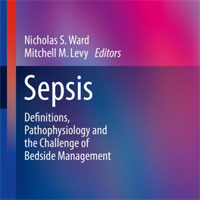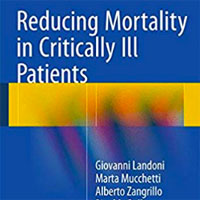Tag: technology
New Guidance for Medication Safety in the ICU
Critically ill patients are a population at high risk for more frequent and more severe medication-related events. Critically ill patients receive twice the number of medications that non-critically ill, hospitalized patients... read more
3D-Printed Organs Could Let Surgeons Practice and Plan Dangerous Operations
An international team of researchers has used 3D-printing technology to produce individually-tailored model organs. These dummy organs could one day improve your chances of surviving surgery, by allowing doctors to plan and... read more
The Digital Capital of the World, Where Patients OWN Their Medical Data
E-ambulance is keyed onto X-Road, and allows paramedics to access patients' medical records, meaning that the team that arrives for your chest pains will have access to your latest cardiology report and E.C.G. Since 2011,... read more
A New Algorithm Identifies Candidates for Palliative Care by Predicting When Patients Will Die
End-of-life care can be stressful for patients and their loved ones, but a new algorithm could help provide better care to people during their final months. A paper published in arXiv by researchers from Stanford describes... read more
Easier Way to Measure Vital Signs
Cornell University researchers perfected a way to monitor vital signs that doesn’t require skin contact. Their technique relies on small radio frequency identification (RFID) sensors that can pick up heartbeats, chest movements... read more
The Revolution in EMS Care
There's a revolution taking place in emergency medical services, and for many, it could be life changing. From the increasingly sophisticated equipment they carry and the new lifesaving techniques they use, to the changing... read more
Use of Wearable Devices for Post-discharge Monitoring of ICU patients
Wearable devices generate signals detecting activity, sleep, and heart rate, all of which could enable detailed and near-continuous characterization of recovery following critical illness. We found that wearable devices could... read more
Algorithm Can Diagnose Pneumonia Better than Radiologists
Stanford researchers have developed a deep learning algorithm that evaluates chest X-rays for signs of disease. In just over a month of development, their algorithm outperformed expert radiologists at diagnosing pneumonia.... read more
Medical Journals in the Age of Ubiquitous Social Media
Medical journals increasingly use social media to engage their audiences in a variety of ways, from simply broadcasting content via blogs, micro-blogs, and podcasts to more interactive methods such as Twitter chats and online... read more
A Measure of Physicians’ Motivation to Adopt Medical Devices
This is the first reliable and valid scale to measure physicians' adoption motivation. Future adoption studies assessing the individual level should include the PMA scale to obtain more information about the role of physicians’... read more
Diagnostic Imaging on iPhone
FDA just cleared Butterfly Network's iQ an iPhone-connected Ultrasound system, which claims it is the world's first "ultrasound-on-a-chip" system. Butterfly iQ is FDA 510(k) cleared for diagnostic imaging across 13 clinical... read more
The Practice and Implications of Finding Fluid During Point-of-Care Ultrasonography
Point-of-care ultrasonography (POCUS) can augment physical examination and procedural efficacy but requires appropriate education and program setup. As POCUS continues to spread, internal medicine physicians need to clarify... read more
Surgeons Are Using Social Media to Share and Learn New Skills
Learning from others' experiences is an important aspect of professional development in surgery. That’s why academic surgical departments across the globe hold weekly Morbidity and Mortality (M&M) conferences that gather... read more
Alarm Fatigue in ICU Addressed in Two Studies
Alarm fatigue within the intensive care unit (ICU) can negatively impact patient safety and lead to life-threatening events. Researchers from Harlem Hospital and Maimonides Medical Center aimed to identify solutions fight... read more
Bedside Chest Radiographs in the ICU – DRw vs. CR
Critical care chest radiography with a portable wireless direct radiography (DRw) system can provide similar or superior information compared to a computed radiography (CR) system regarding clinically significant findings... read more
ICU Telemedicine Program Financial Outcomes
The ability of properly modified ICU telemedicine programs to increase case volume and access to high-quality critical care with improved annual direct contribution margins suggests that there is a financial argument to encourage... read more
Robot aims to zap out ICU infections
Hospital workers are constantly cleaning rooms to avoid Hospital Acquired Infections at Hunterdon Medical Center, but now a robot will be working to do the dirty work. In July, the hospital purchased a $100,000 Xenex... read more
Telehealth more popular for scheduled and patient-focused visits
New report from CHIME and KLAS virtual care platforms are finding favor for scheduled and patient-focused visits, on-demand and consumer-focused meetings and telespecialty consults. Despite ongoing questions about reimbursement... read more
Detecting Undiagnosed Atrial Fibrillation with Cardiac Monitors
A group of researchers led by James A. Reiffel, M.D., did a study to determine the incidence of previously undiagnosed atrial fibrillation in high-risk patients with the use of insertable cardiac monitors (ICM). The results... read more
Continuing Rehabilitation After ICU Discharge
This article discusses technological innovations that promote survival and enhance recovery, starting within the ICU with developments in ventilation, sedation, early mobility and ICU design. Post-ICU, the establishment of... read more
Maryland emergency doctors find new life-saving use in old machine
A little used machine designed to detox people who overdose on Tylenol and other medications found another use. Doctors at Shock Trauma used it to save a teenage gunshot victim and then a college football player and an amateur... read more
Technologic Distractions
Summary of Approaches to Manage Alert Quantity With Intent to Reduce Alert Fatigue and Suggestions for Alert Fatigue Metrics. Approaches for managing alert fatigue in the ICU are provided as a result of reviewing tested interventions... read more









